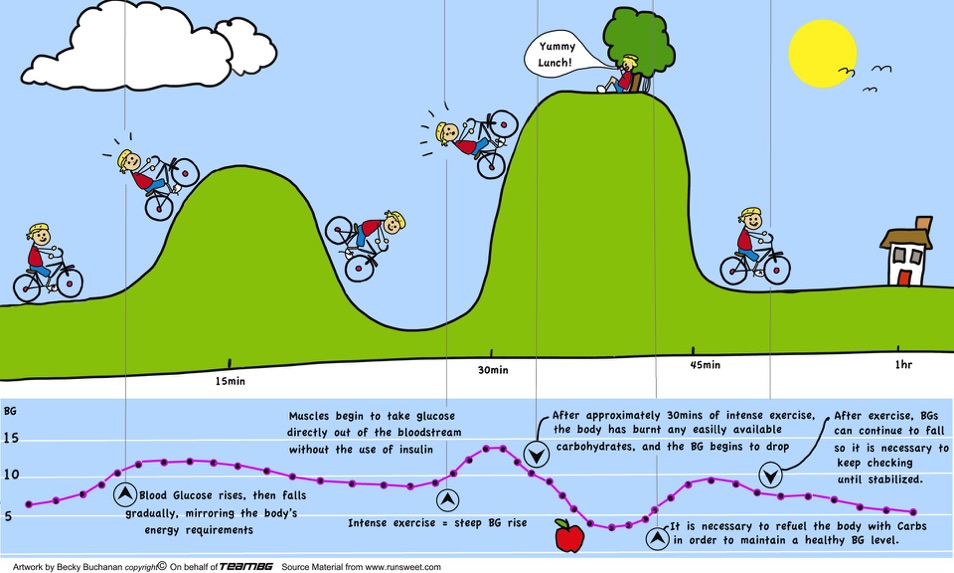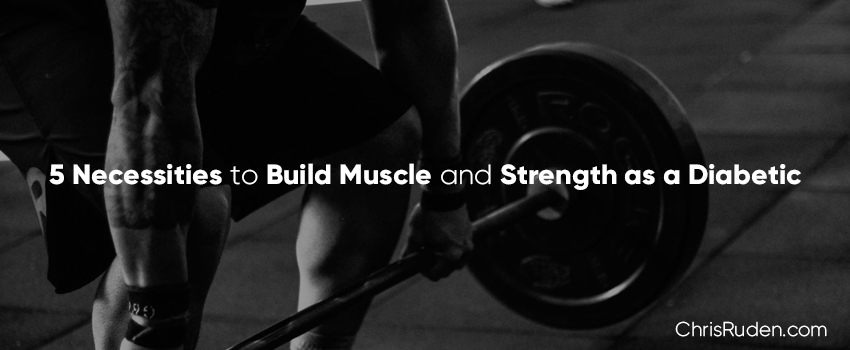5 Necessities to Build Muscle and Strength as a Diabetic
The music at my gym is blaring hardcore rock as I’m setting up to do my third heavy set on bench press. I have already warmed up and found my groove and I hear “BEEP! BEEP!”.
Low blood sugar. Great.
My entire workout gets put on pause as shove a mini pack of gummies in my mouth while other lifters stare at me (probably jealous of my mid-set snack). I walk around and wait for my blood sugar to go up little before I can even think about getting back in the groove— all while I’m starring at the vending machine, holding myself back from eating everything I can get my hands on.
Diabetes can be a pain— especially when you are trying to build muscle and strength. Having your life run by this number on a machine can be like some new age blood glucose dictatorship if you don’t manage it while you train. But it is not impossible to build an epic physique and get ridiculously strong as a diabetic. Quite the opposite actually as bodybuilders take insulin to get bigger. Insulin is one of the most anabolic (muscle building) hormones in the human body. It just takes control and understanding
Here are five methods to controlling your diabetes during exercise so that you can build an awesome body and get strong:
-
- Understand what’s Going On: Depending on what type of exercise you are doing, your blood sugar may react differently so you have to be prepared by understanding the process! Both cardio and weight training increase insulin sensitivity during and up to 7 hours post-exercise so reducing your basal or bolus may help you control the extreme lows post exercise. This means any insulin you take will be more effective at a lower dose after exercise. High intensity exercise resulting in roughly >70% VO2 max or >85% max heart rate like strength training and crossfit can cause stress hormones, growth hormone, and adrenaline secretion, signaling to the liver to release glucose into the blood stream for the muscles to use.
 The pancreas auto regulates that temporary increase in blood sugar by releasing insulin in people without diabetes but not us! Bolusing for a slight increase in BG might not be needed because it can just be temporary but if you do bolus, remember the increased insulin sensitivity. We need to be aware of our body’s reaction to exercise.
The pancreas auto regulates that temporary increase in blood sugar by releasing insulin in people without diabetes but not us! Bolusing for a slight increase in BG might not be needed because it can just be temporary but if you do bolus, remember the increased insulin sensitivity. We need to be aware of our body’s reaction to exercise.
- Understand what’s Going On: Depending on what type of exercise you are doing, your blood sugar may react differently so you have to be prepared by understanding the process! Both cardio and weight training increase insulin sensitivity during and up to 7 hours post-exercise so reducing your basal or bolus may help you control the extreme lows post exercise. This means any insulin you take will be more effective at a lower dose after exercise. High intensity exercise resulting in roughly >70% VO2 max or >85% max heart rate like strength training and crossfit can cause stress hormones, growth hormone, and adrenaline secretion, signaling to the liver to release glucose into the blood stream for the muscles to use.
-
- Keep up with your trends: If you keep up with the Kardashians better than you keep up with your blood sugar trends, shame on you (seriously, that show is awful). Tracking when you go low and high on average will help you predict and avoid messing up your training and ruining your performance. If you notice you always treat a high BG before your workout and you drop low during your workout, you need to adjust. History repeats itself— but your bad blood sugars don’t have to if you watch your trends. Muscles need proper glucose uptake to perform and grow optimally. Remember all sports, wars, and successes are won in practice, not the big day. What you do leading up to the gym can be just as important as the training session to diabetic athletes.
-
- Eat your protein: Higher protein diets help build and preserve muscle mass, lower a1c, are shown to be effective in long term weight loss . In order to optimally build muscle mass, aim for your goal body weight in grams of protein a day (more on this in my ebook “The Art of Losing Body Fat” releasing in May!). Insulin and protein can be a very effective combo to build muscle. Protein also delays the digestion of carbohydrates which means a less severe spike in your blood sugar.
- Eat your protein: Higher protein diets help build and preserve muscle mass, lower a1c, are shown to be effective in long term weight loss . In order to optimally build muscle mass, aim for your goal body weight in grams of protein a day (more on this in my ebook “The Art of Losing Body Fat” releasing in May!). Insulin and protein can be a very effective combo to build muscle. Protein also delays the digestion of carbohydrates which means a less severe spike in your blood sugar.
-
- Don’t be afraid of carbs: I feel as though I’ll need to be a carb advocate because they have gotten such a bad reputation. As I have covered in other articles and in my ebook, carbs don’t make you fat, overconsumption of calories make you fat. In regards to blood sugar, yes, more carbs equal more insulin which isn’t a bad thing. What is really bad is depriving yourself of a macronutrient because of fear. When most people go low carb (read my thoughts on low carb diets) they are not solving their problem of diabetes management— they are hiding it. Don’t put perfume on the pig…give the pig a bath. With knowledge and understanding of how food affects your blood sugar, you can allow for enough carbs to maximize performance, muscle growth, fat loss, and mental state all while still appropriately managing your diabetes.
- Hypo is a no-go: Personally, I never go into a training session with a blood sugar of less than 115. While intense exercise generally increases blood sugar, my warm up and warmup sets can take up to 20 minutes which, at lower intensities, can drop my sugar for immediate glucose uptake from the blood stream. Low blood sugar can ruin your workout, strength, and mood. NOTHING is worse than taking pre workout to kill it at the gym and mid-set you start to shake and sweat like you see a ghost. Be sure you find what’s a comfortable range for you to train in to maximize performance.

